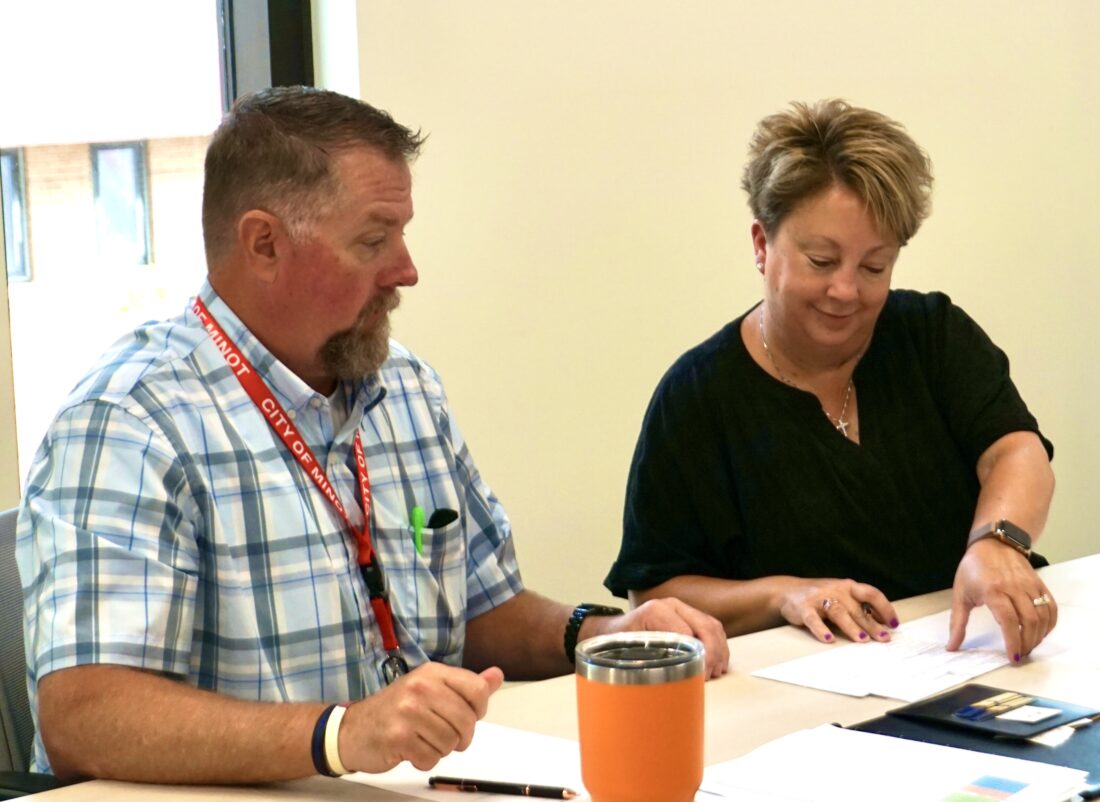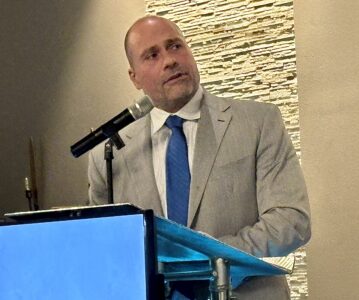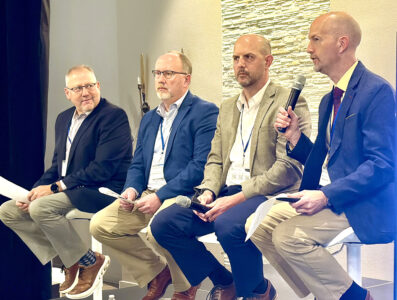Canvass makes results official

Jill Schramm/MDN Canvassing board members David Lakefield, city finance director, and Lisa Olson, city council member, look over absentee ballot signatures during mayoral election canvassing on Monday, Aug. 18, in Minot City Hall.
Three votes added by a canvassing board Monday, Aug. 18, didn’t change the outcome of Minot’s special election for mayor.
The three votes were split between candidates Mark Jantzer, Paul Pitner and Rob Fuller. Official results showed Jantzer, 2,352 votes; Fuller, 1,431 votes; Pitner, 1,399 votes. Josiah Roise’s total remained at 324.
Roise said he is taking steps to challenge the election. He has until Thursday, Aug. 21, to do so.
State law provides that a defeated candidate may contest election results through a court process involving service of a summons and complaint against a party accused of an illegal action or against a candidate accused of ineligibility. The accusations would be heard and ruled on by a district court judge. The process does not prevent an election winner from taking office while the challenge moves forward.
Roise is raising the challenge over voting machine anomalies.
He said the machine in which he cast his ballot on election day, Aug. 5, did not produce a message indicating scanning was successfully completed. The machine did not react at all in taking in his ballot, he said.
He said he mentioned the incident to a poll worker, who denied it happened. After hearing other voters experience the same thing at the special election poll, even when voting for different candidates, Roise brought the matter to the attention of the county auditor and to the elections director at the Secretary of State’s office, who both vouched for the machines’ accuracy.
Roise said he cannot have faith in the results when the machines operate in ways in which they are not supposed to operate.
Ward County Auditor Marisa Haman said a voting machine’s acknowledgement of a ballot can be subtle and easily missed. However, even if a voter does not see the acknowledgement, there are checks and balances to ensure all ballots are counted, she said.
The number of voters, the number of ballots handed out and the number of ballots counted by the machines or set aside must match. Election workers will periodically check those numbers throughout election day to ensure the numbers are matching, Haman said. She said there were no discrepancies in the Aug. 5 city election.
“I do know that all the ballots were counted by the machines so I don’t have concern,” Haman said.
Roise said his concern is not that the number of voters and ballots counted match. He said his concern is that rerouting of votes from one candidate to another could occur. He suggested voting machines are susceptible to hacking, citing information from nationally known elections skeptic Douglas Frank and from the “Absolute Proof” documentary featuring Mike Lindell.
“I want the people of Minot to know about these anomalies,” Roise said. “If there are too many people telling me that they feel like the election is not legitimate, then pass that message on to the people in power. I am not in power. But they need to be heard.”
The Aug. 5 special election counted 5,519 votes, including 13 for write-in candidates. The contest total showed 5,521 voters. There was one blank ballot cast and one ballot with an overvote of more than one candidate that could not be counted.
The canvassing board accepted three absentee ballots that had been set aside until voters could “cure” mistakes related to mismatched or absent signatures on envelopes. Three additional absentee ballots were rejected because voters failed or declined to respond to invitations to cure their signatures.
Two absentee ballots that arrived after deadline also were rejected. Three ballots that had been set aside until voters could provide proper identification were rejected because no identification was later produced.





